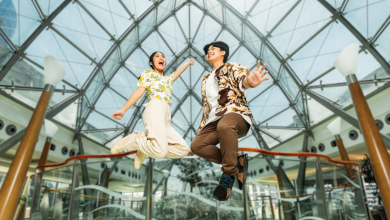There is no doubt that the Philippines is among the most naturally gifted places in the world. With its beautiful and exotic tourist destinations, one can never be in the Philippines without going out for an adventure. But the same can not be said about its capital Manila.
Since after the American occupation, Manila has gone through many transformations and one common sentiment lies somewhere in between regret and disappointment.
The city, as we know now, is a place that often signifies congested traffic, smoke-filled air, overly populated, and as a haven of ungracefully aged infrastructures.
But in the city’s many reiterations, there was once a time that it shined the brightest. In the onset of the 19th century, Manila’s urban allure was comparable to Paris- the world’s global hub for fashion, art, culture, and gastronomical treats. It was endowed with a multitude of classically designed buildings. And surrounding the sea of people, who sport a unique sense of self-expression, are long lines of jewelry stalls, food stalls, and fashion outlets. Even the major thoroughfares are unrecognizable.
Now, we’re going to take you back in time to witness Manila like you’ve never seen it before.
(The photos used in this article came from Filiknow.net and other sources. This article is intended for informational purposes only)
Manila Post Office

The Manila post office was modeled after the neoclassical aesthetic movement evident by its naturalist ornaments and baroque attributes. It was strategically placed at the foot of Jones Bridge to boost accessibility and to provide a more convenient way to distribute mail to various parts of the city.
Manila City Hall

Manila city hall is located in the historic area of Ermita, Manila.It stands at the heart of the city flaunting its elegant curves and classical form. Its clock tower is considered to be the biggest in the Philippines. Ultimately, the Manila city hall is an unmissable piece of architectural ingenuity that’s unfazed by the busiest of roads.
EDSA-Guadalupe

With its elegant curves and burst of colors, EDSA-Guadalupe is reminiscent of Paris’ romantic sceneries. The gentle yet striking imagery elicits something similar to the cinematography of famous Parisian movies.
Lawton, Manila

Now known as Liwasang Bonifacio, Plaza Lawton was a place colorful place rich in culture and people. Then, it was considered as a transport hub where “Kalesas” dominated the thoroughfares in flocks of different designs and aesthetic.
Quiapo, Manila

Quiapo was considered the center of trade, fashion, art and higher learning for Manila’s elites. Its strategic placement made it a melting pot of commerce and economic activity. It houses the Quiapo church wherein the Feast of the Black Nazarene is commemorated by millions of Filipinos every year.
Roxas Boulevard, Manila

The Roxas Boulevard was once a popular tourist spot for foreigners and Filipinos alike. Just beside the Manila Bay, it’s the perfect spot to cool down on hot summer days. Embellished with rich and colorful flora, people can really feel one with nature without leaving the city. Aside from this, Roxas Boulevard is also known for its beautiful sunsets.
Jones Bridge (then Bridge of Spain) overlooking Pasig River

Before industrialization kicked in, Jones Bridge looked like a scene cut out from a romantic film. It was a spot that fostered trade and commerce, connecting Binondo to Rosario Street. It was patterned after Paris’ bridges with Napoleonic and Haussman era influences.
Escolta, Manila

Escolta is located not far from Binondo- considered to be the oldest Chinatown in the world. Due to its proximity with the Filipino-Chinese commerce and trades, it was widely recognized as a place where merchant immigrants frequent. But despite being a place of business, it was still able to retain a sense of unity. It became a hub where different cultures, customs, and products diverge.




Are you sure that is Manila Post Office?
No, it ain’t … It used to be the Finance building but is now the National Museum of Anthropology (formerly Museum of the Filipino People) … https://en.m.wikipedia.org/wiki/National_Museum_of_Anthropology_(Manila) …
Yes, as I remember it .
Wrong caption for Post Office! The picture is Agrifina Circle in Luneta….